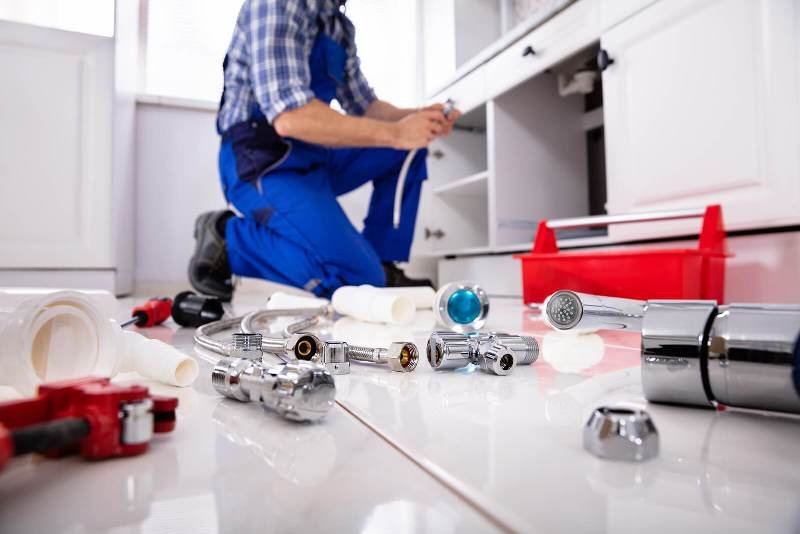Bathroom remodeling projects are exciting endeavors, offering the opportunity to transform one of the most essential rooms in your home. However, amidst the flurry of design decisions and aesthetic considerations, it’s crucial not to overlook the fundamental aspect of bathroom renovation: plumbing. Understanding the basics of bathroom plumbing is essential for renovators, as it lays the foundation for a functional and efficient space. In this comprehensive guide, we’ll explore everything you need to know about bathroom plumbing, from supply lines to drainage systems, ensuring that your renovation project is a success.
The Importance of Plumbing in Bathroom Renovation
Bathroom plumbing serves as the backbone of the space, facilitating the flow of water to essential fixtures such as sinks, showers, and toilets. Without a well-designed and properly installed plumbing system, these fixtures would be rendered useless, compromising the functionality and usability of the bathroom. Therefore, prioritizing plumbing considerations in your renovation plans is crucial for ensuring a successful outcome.
Components of Bathroom Plumbing
Supply Lines
Supply lines are responsible for delivering water to various fixtures in the bathroom. These lines, typically made of materials such as copper, PEX, or PVC, must be installed with precision to prevent leaks and ensure adequate water flow. When renovating your bathroom, it’s essential to assess the condition of existing supply lines and replace them if necessary to avoid future issues.
Drainage System
The drainage system in a bathroom consists of pipes that carry wastewater away from the space and into the sewer or septic tank. Proper slope and venting are essential to prevent backups and maintain proper drainage. During a renovation, it’s essential to inspect the drainage system for any signs of damage or blockages and address them promptly to avoid costly repairs down the line.
Ventilation
Proper ventilation is crucial for preventing moisture buildup and mold growth in the bathroom. Vent pipes allow stale air to escape while ensuring that the plumbing system functions efficiently. When renovating your bathroom, consider incorporating ventilation upgrades such as exhaust fans or additional vent pipes to improve air circulation and mitigate humidity levels.
Common Plumbing Issues in Bathroom Renovation
Leak Detection
Leaks can occur anywhere in the plumbing system, from supply lines to drain pipes. Regular inspection and maintenance are essential for detecting and repairing leaks before they cause significant damage to your home. During a renovation, be vigilant for signs of water damage such as damp spots or mold growth and address any issues promptly to prevent further damage.
Low Water Pressure
Low water pressure can be a frustrating issue in any bathroom. It may be caused by factors such as clogged pipes, sediment buildup, or inadequate supply lines. Identifying the root cause of low water pressure is key to restoring proper functionality to the bathroom. During a renovation, consider upgrading to low-flow fixtures or installing a pressure-boosting system to improve water pressure throughout the space.
Planning Your Bathroom Renovation
Consultation with a Plumbing Professional
Before embarking on a bathroom renovation project, it’s essential to consult with a licensed plumber. A professional plumber can assess your existing plumbing system, identify any potential issues, and recommend the best course of action for your renovation plans. Their expertise can help you avoid costly mistakes and ensure that your plumbing upgrades are implemented correctly.
Budgeting for Plumbing Costs
Plumbing is a significant expense in any bathroom renovation project, so it’s essential to budget accordingly. Factor in costs for materials, labor, and any unforeseen repairs that may arise during the renovation process. By allocating funds for plumbing upgrades upfront, you can avoid budget overruns and ensure that your renovation stays on track.
Conclusion
In conclusion, understanding the basics of bathroom plumbing is essential for renovators embarking on a bathroom remodeling project. By familiarizing yourself with the components of bathroom plumbing, common issues, and planning considerations outlined in this guide, you can ensure that your renovation project is a success. With careful planning, attention to detail, and the help of a qualified plumbing professional, you can create a functional and efficient bathroom that enhances the comfort and value of your home.


